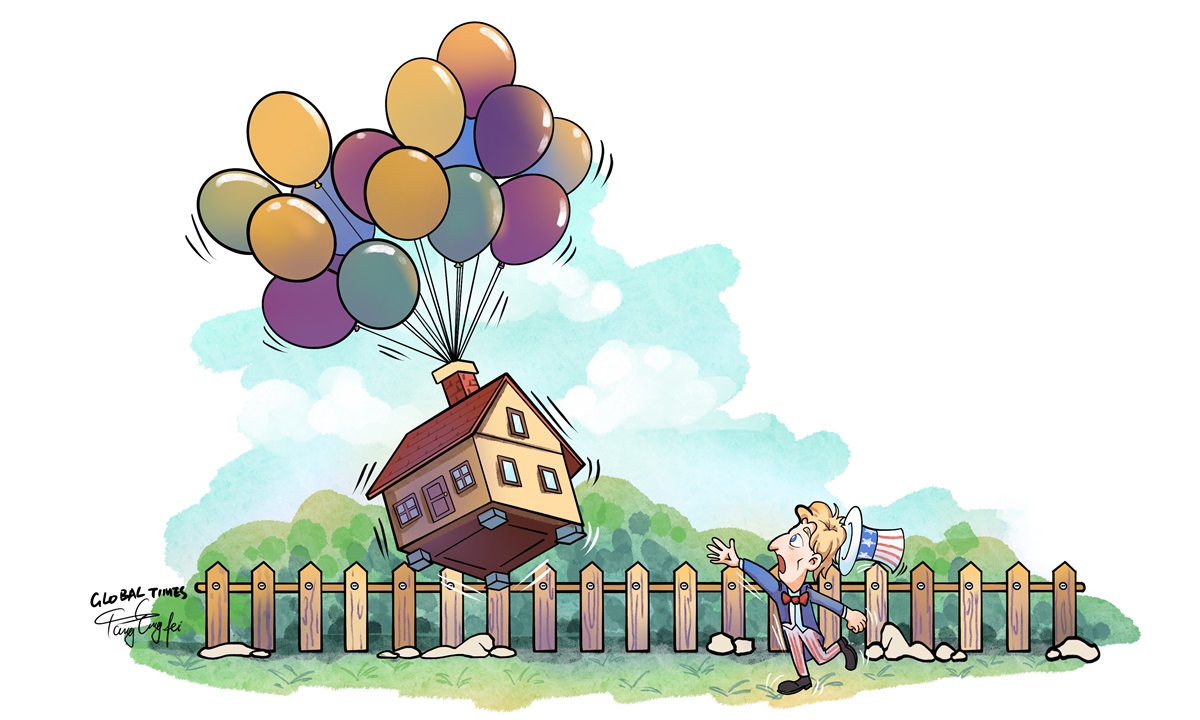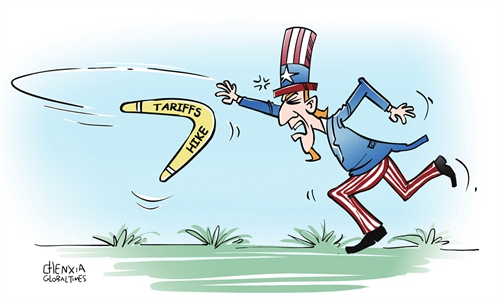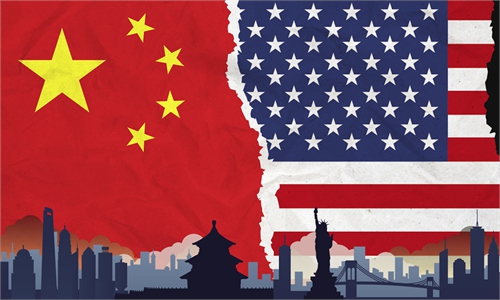
Illustration: Tang Tengfei/GT
The American housing market is experiencing rising rents and elevated mortgage rates, which are constantly driving up home prices, leaving the younger generation feeling disillusioned and in peril as their dream of owning a home fades further away.
American homebuyers would need an annual income of more than $100,000, well above the country's household median income of $74,000, to afford a home in most cities and states. According to the New York Federal Reserve, only 40 percent of American renters expect to ever purchase a home one day, which is the smallest share since the survey on consumers' housing-related experiences and expectations was started 10 years ago.
Analysts warn that the lack of real progress in curbing inflation in recent months will force the US Federal Reserve to keep interest rates higher for longer. Actually, hikes in prices of grocery staples, gasoline and housing rates are a subtle way of imposing inflation on average American families. With more Americans priced out of homeownership, rental rates may prove more resilient than expected, keeping US inflation elevated and sticky throughout 2024.
Both the Federal Reserve - the US central bank - and the US government are facing heavier pressure from the American public to fix housing affordability.
Home prices in the US has surged by 47 percent since 2020, according to media reports. This surge has been one of the most dramatic seen among developed countries.
The fact that many Americans, young people in particular, are being priced out of the housing market is intensifying public disapproval and mental stress. These frustrations are spreading quickly, fuelling broader dissatisfaction and contributing to growing pessimism about the US economy, which is looming over the upcoming election.
Economists say it is challenging for the seemingly hot US economy to achieve a soft landing, or to reach an equilibrium between controlling inflation and maintaining a modest level of economic growth.
To make things worse, the added costs from the US Federal Reserve's exorbitantly elevated interest rates, currently at approximately 7 percent for 30-year fixed-rate mortgage loans, are significantly higher than the average rate of 3 percent seen in 2020.
Borrowing costs in the US have soared to levels the world has not seen in many decades, leading to increased anxiety and fear among ordinary Americans about the cost of financing major purchases and services, from homes and cars to education and medical care.
Americans also see a greater chance of a prolonged period of high interest rates than they did a year ago due to persistent inflation and the US central bank's reluctance to reduce policy rates.
In the first quarter, the US economy slowed significantly, reaching only 1.6 percent annualized growth, a much weaker increase than expected by the market. Meanwhile, the consumer price index, a key inflation gauge, rose 3.5 percent in March, exceeding expectations and indicating an acceleration in inflation.
Nearly one-third of all American households spent more than one-third of their incomes on housing in 2021. A recent opinion poll found that over 70 percent of Americans believe the housing market is only going to get worse before it gets better.
The issue is feeding into wider worries about ever-rising living costs in the US. Policymakers at the US Federal Reserve want to see inflation start coming down, but what is worrying is that economic activity is decelerating while inflation is getting stickier. This is bad news for increasingly skittish market investors.
A soft landing, a scenario in which inflation returns to the central bank's 2 percent target sustainably without a recession, is not in sight any time soon. Some claim that US inflation may never fall to the intended 2 percent without causing a recession.
Earlier this year, investors expected several interest rate cuts by the US Federal Reserve in 2024, but the continuing inflation numbers have pushed investors to slash their expectations to only one rate cut, possibly at the end of 2024. Now, it is a perplexing time even for Federal Reserve policymakers, because they remain undecided on whether they still need to take more measures for inflation to fall meaningfully.
US inflation has come down a long way from its 40-year peak of 9.1 percent in June 2022, but still about three out of four consumers in the so-called political US swing states said that they believe inflation is going the wrong way. Even Federal Reserve officials are divided over how effective their stringent policy tightening measures have been in curbing credit growth and taming inflation.
Surging home prices are one of the biggest challenges facing the US economy. High home prices are causing American households to feel increasing financial pressure. Rising costs for gasoline, housing, dining out and clothing are contributing to inflationary pressures in the US.
This is leading to widespread public concern that previous progress in lowering inflation may be stalling. The US government is becoming increasingly unsure of how to resolve the housing market dilemma.
The author is an editor with the Global Times. bizopinion@globaltimes.com.cn



